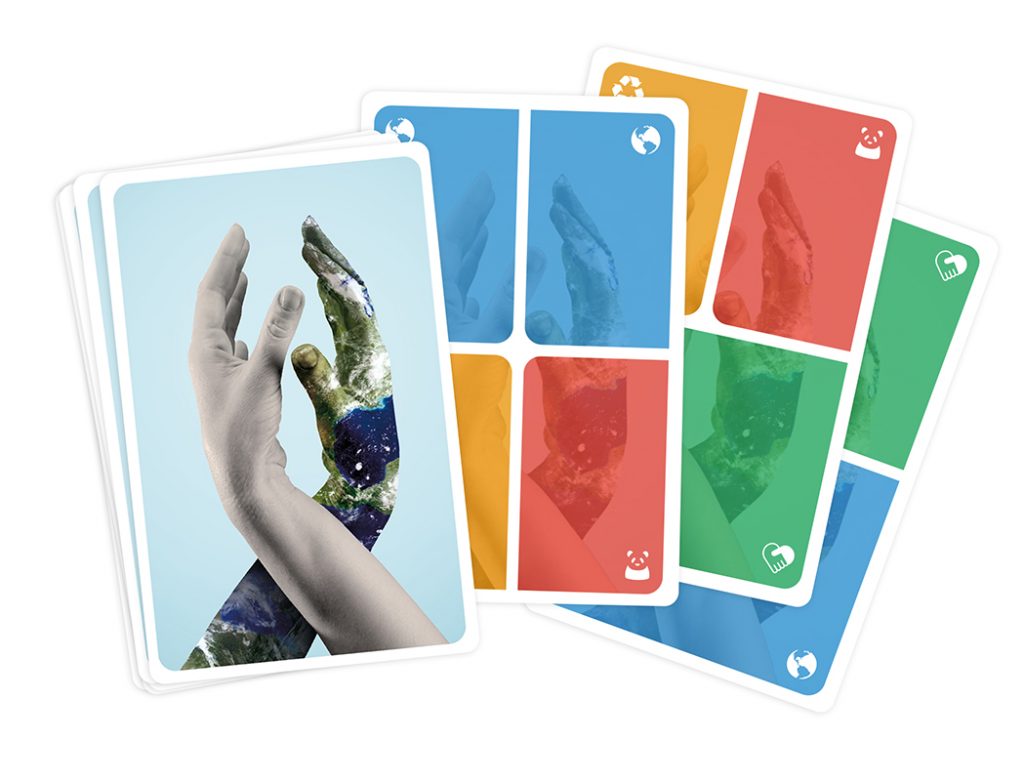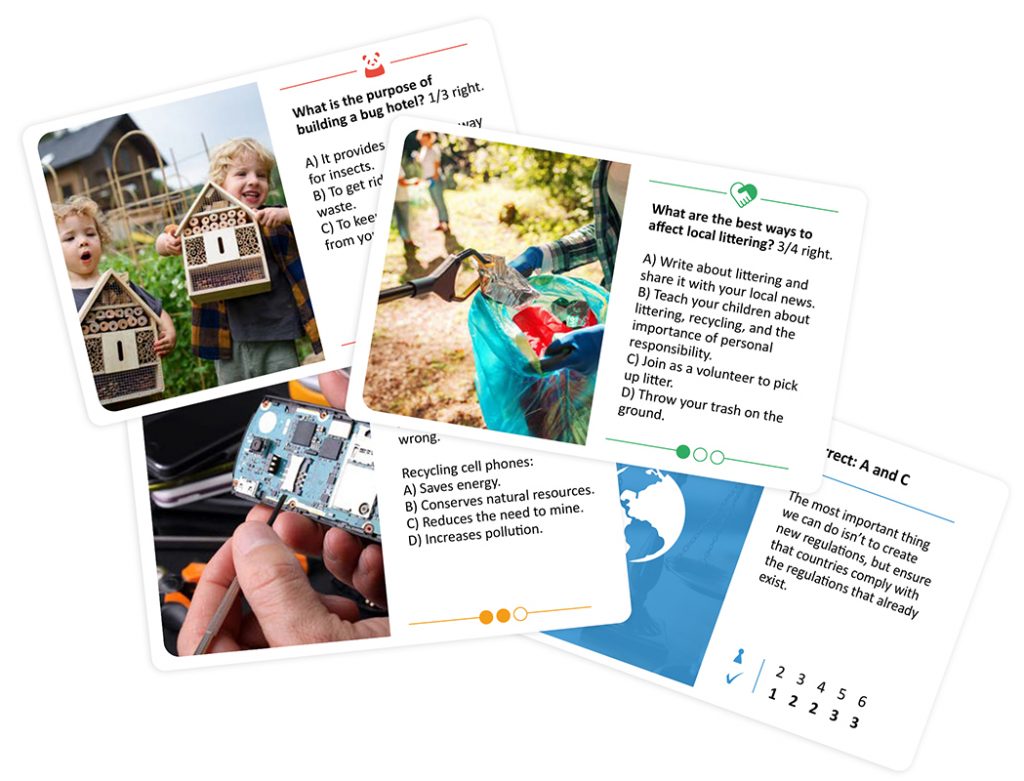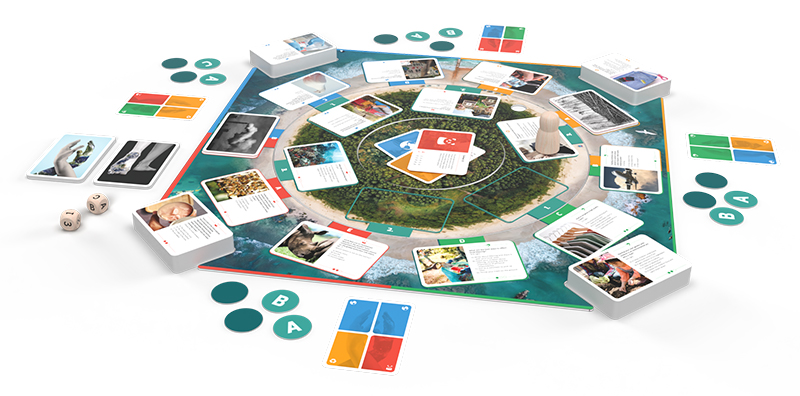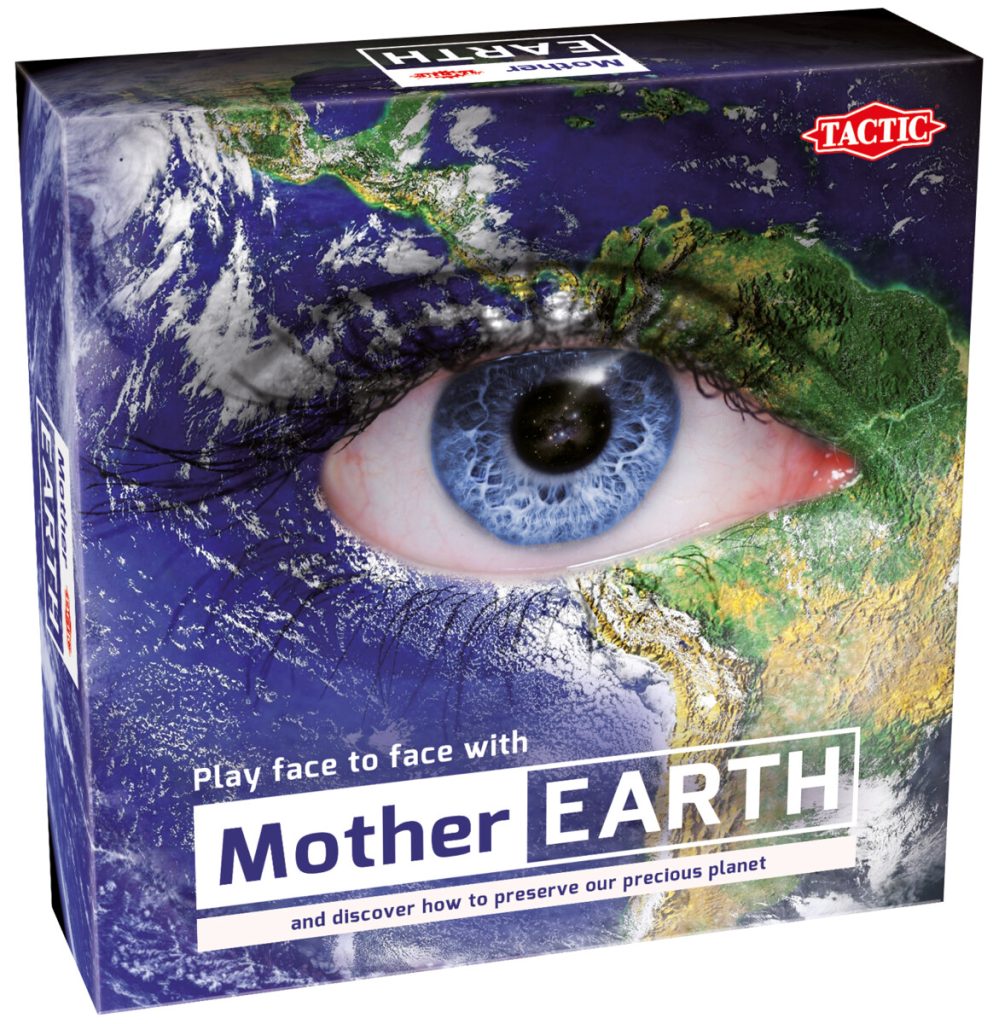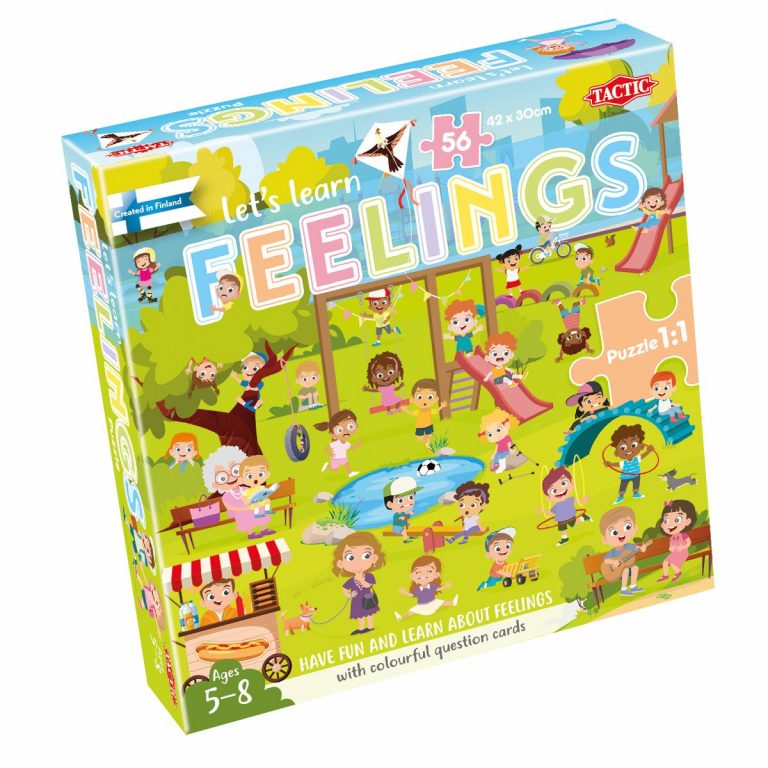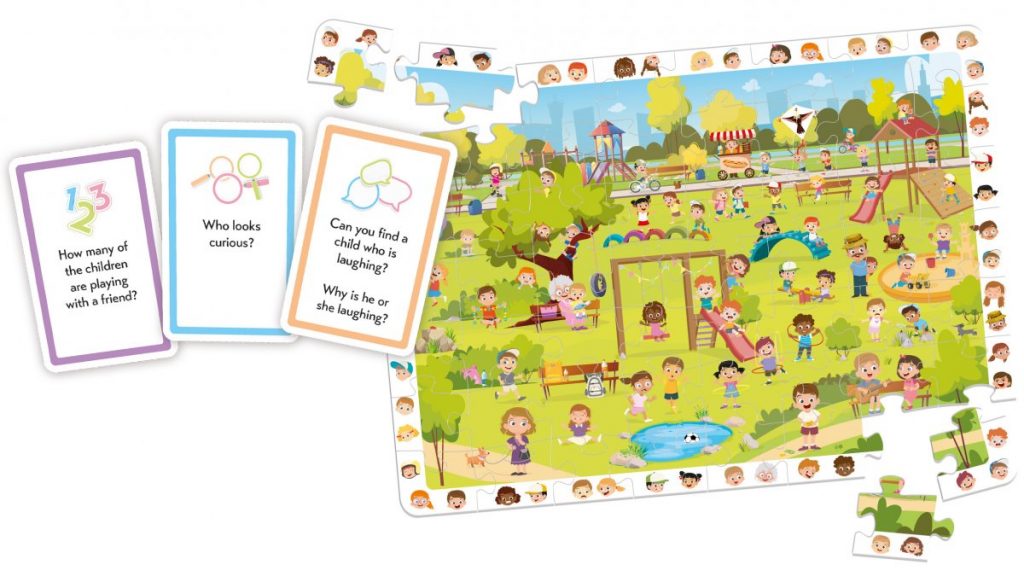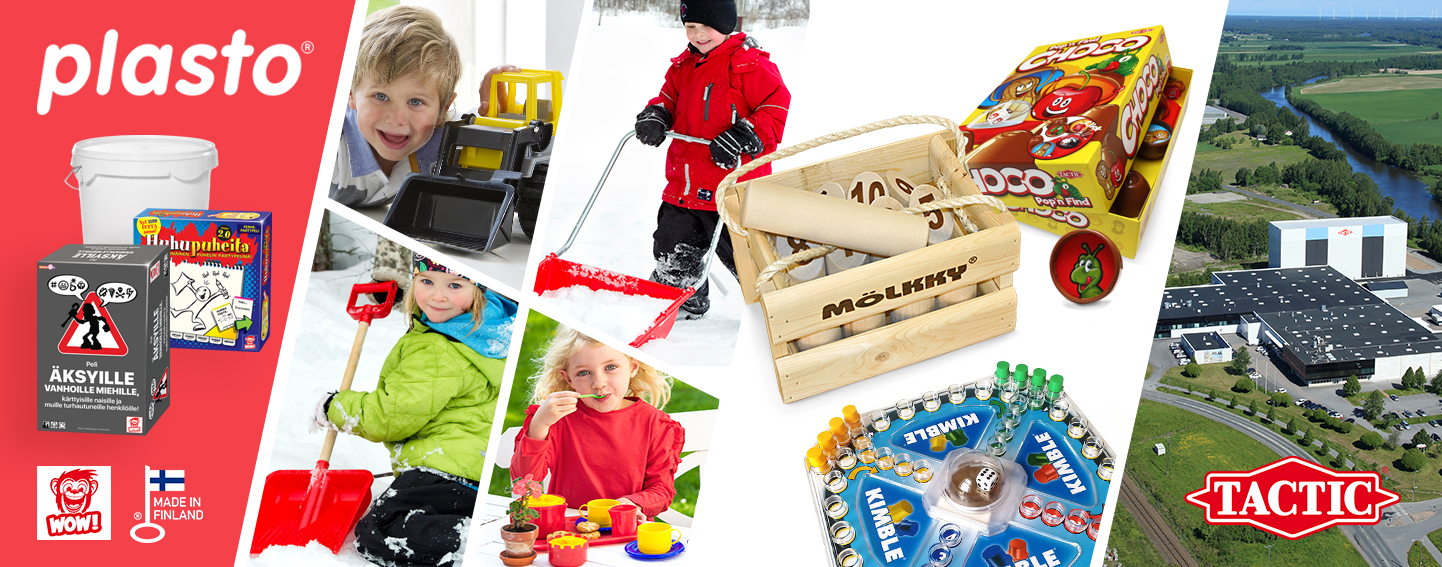
The strong tradition of the Finnish toy industry continues as Tactic Games, the company from Pori known for its board games, outdoor games, and toys, announced today that it is purchasing the 70-year-old AB Plasto Oy, located in Åland. The acquisition combines two traditional players in the toy industry, whose deep roots in Finnish values further strengthen the future of Finnish toy production.
Plasto is widely known for its durable and iconic toys that have brought joy to Finnish children for generations. Plasto’s scooters, trucks, and various sand and outdoor toys are a familiar sight in Finnish playgrounds.
The acquisition is a natural step in Tactic Games Oy’s strategy, which emphasizes Finnish values and responsibility.
”We have observed Plasto’s activities for a long time, and we are now happy to be part of its future. Plasto’s toys are more than just toys, they play a significant role in Finnish childhood memories and as builders of national identity. That is why the products are a great fit alongside Tactic’s popular brands. For example, the international hits Mölkky® and Alias are now joined by a quality brand that is aimed at the youngest members of the family.” Tactic Games’ CEO Lauri Nieminen says.
Tactic Games is a Finnish family company that has grown over half a century to become one of the most significant toy and game powerhouses in Northern Europe. With the acquisition, the company’s know-how and product range expands even deeper into the world of toys.
Plasto’s toy factory was founded in 1954 and it is located in Åland. All products feature the Key Flag symbol, representing Finnish origins and quality. Products bearing the Key Flag have been designed for Finnish consumers and manufactured responsibly and ethically.
”The acquisition is a significant milestone for both companies. Plasto’s products represent longevity and durability, the opposite of disposable toys. We will develop Plasto’s durable and Finnish children’s products, strengthen their international sales, and continue the company’s impressive 70-year-old tradition.” says Lauri Nieminen.
Plasto’s CEO Bruno Carlson adds:
”It was important for us to find a partner who shares our values and sees how unique our toys are and our company is. With Tactic, we can make sure our beloved products not only remain but grow and thrive.”
With the acquisition, the production methods, distribution channels, and design expertise of both companies combine, creating synergies that strengthen the companies’ position both domestically and internationally. Responsible production and valuing Finnish work are at the very core of the acquisition. Together, the companies continue to commit to high quality and ethical standards in all activities.
For Tactic, the acquisition means more than simply expanding their product range and production capabilities, it also creates the basis for new types of innovations and creativity in the toy industry.
“Our companies are united by strong values in responsibility and Finnish work, and we appreciate Plasto’s extremely professional and committed personnel. Shared resources enable us to develop new products that will stand the test of time and wear and tear, bringing joy to current and future generations.” Lauri Nieminen adds.
In addition to AB Plasto Oy, the acquisition also includes the Swedish subsidiary Plasto World of Entertainment AB. The companies will become part of the Tactic corporation on May 1, 2024.
Tactic Games Oy specializes in games and toys, continuing to bring tradition and innovations into the global market.
Founded: Tactic Games Oy was founded in 1967 in Pori, where the parent company and factory are still located.
Specialty: The company specializes in producing high-quality and entertaining games and toys that are designed to create unforgettable moments for families and friends.
International activities: Tactic Games Oy is an active player in the international market, and it has subsidiaries and branches in Europe and the United States.
Production in Finland: Most of Tactic’s products are manufactured in Finland, ensuring high-quality products and responsible production.
As part of the Tactic corporation: Tactic Games Oy is part of the Tactic corporation that also includes other significant game and toy companies, such as Mölkky Oy, Bex Sport AB, and AB Plasto Oy.
Commitment to responsibility: The company is committed to high-quality and responsible production and environmentally friendly practices.
Positive influence on the everyday lives of families: Tactic Games Oy’s products have a significant role in children and families spending time together and having fun doing it.
Ab Plasto Oy is a reliable partner for families, offering innovative and safe toys that are a significant part of Finnish play culture.
Tradition in Finland: Ab Plasto Oy is a Finnish company with a solid history in domestic toy production. Plasto turned 70 this year!
Broad product range: The company specializes in manufacturing diverse and high-quality toys for children and families.
Positive influence on society: Plasto’s products have played a significant role in the everyday lives of many children and families, promoting positive interactions and togetherness. The product range is diverse, from outdoor play products to scooters to toy vehicles.
Responsible actions: Ab Plasto Oy emphasizes responsibility in its production and strives for environmentally friendly practices.
HQ in Åland: The company’s HQ and factory are located in Åland, strengthening the company’s strong Finnish identity.
More info about Plasto: www.plasto.fi
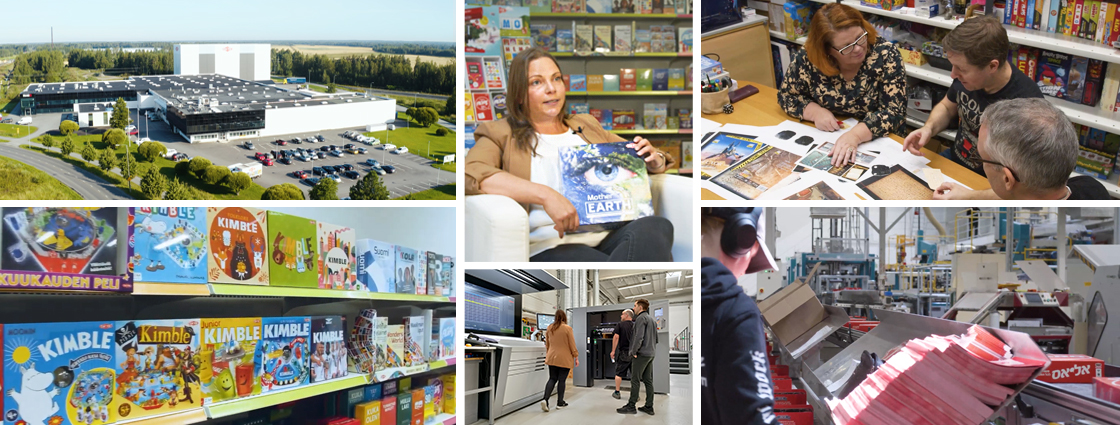
Responsibility is a rising trend, but the Finnish game and toy company Tactic has committed to responsibility since the beginning. All Tactic products are not only entertaining but also sustainably produced. Tactic plans to continue investing in sustainable development and is ready to invest in newer, greener technology. Let’s take a peek at how the world’s most responsible game products are made at Tactic’s factory in Pori, Finland.
Innovation is the desire to develop
At Tactic, product development plays an essential role, with products always based on genuine consumer needs. Industry trends are closely monitored, and based on that, considered what types of products people want in the market. To succeed in the games business, you must understand what people are interested in and how they want to be entertained, learn, or spend time. Tactic aims to create products that are both innovative and durable, considering sustainability perspectives from the design stage, such as maximizing the number of plays.
Conscious customers are increasingly inquiring about the origin of products and materials. Tactic’s CEO, Lauri Nieminen, notes that in terms of responsibility, Tactic stands up exceptionally well when compared to any competitor’s products. One must be willing to change, take concrete actions, and occasionally take calculated risks for responsibility. It takes courage and uniqueness to do things differently, but for Tactic, responsibility is so important that the risk is worth taking. Tactic is also ready to invest in new technologies that reduce waste and energy consumption.
Production firmly in own hands
One of the foundational pillars of Tactic’s responsibility thinking is its production – both a significant source of pride and an extremely responsible choice. At their own Pori factory in Finland, Tactic’s production remains firmly in the company’s hands, ensuring responsible and sustainable supply chains, production monitoring, and optimal working conditions. Careful production planning accommodates long-term sustainable development. After meticulous optimization, production runs with fewer resources, consuming less electricity and producing less waste.
Part of reducing material waste is optimizing designed products for their production equipment. It’s optimal for production machines to use sheets of a certain size, thus reducing waste. Older products are also redesigned, introducing new design solutions that use cardboard space more efficiently. The main criterion is that the sheets have no wasted space, utilizing all the material as efficiently as possible.
Material supply chains in check
Tactic continuously contemplates how game parts traditionally made from plastic or other unsustainable materials can be replaced with more responsible and sustainable options. Tactic has always been very particular that their games consist of durable materials. Raw materials are chosen to be as eco-friendly as possible and sourced locally. Emissions are also closely monitored.
It brings Tactic great pride and joy when they design a game with no plastic at all. Instead of plastic, the most sustainable cardboard solution is always sought. A durable product is one that lasts for many plays, both in terms of quality and gameplay. Mölkky is one such success story that is conquering the world. Mölkky is a thoroughly ecological choice for shared game moments, with the game pieces made in Pori from local birch. Mölkky has become a strong, beautiful, and Finnish brand.
Tactic’s product development manager, Veera Vaajasalmi, oversees responsibility-related certificates. The PEFC and FSC certificates the company has received indicate that the origin chains of the wood, cardboard, and paper used in the products support sustainable development. Vaajasalmi states that they always know the origin of raw materials, from where the tree grew and how it was cultivated to the point of harvesting. The company’s excellent work in the area of responsibility is also closely monitored with annual audits.
Read more about Tactic’s Responsibility: www.tactic.net/…/responsibility
Mother Earth is the flagship of responsibility
The new game for Fall 2023, Mother Earth, showcases Tactic’s expertise in responsibility in an entirely new way. The Mother Earth board game responds to the environmental concerns especially observed among young people. In these times, we all should think more about how we can help nature and the planet fare better.
Mother Earth approaches environmental issues through positive actions. This entertaining game includes a fun cooperative feature and plenty of interaction among players. The game guides thoughts on what small actions can we achieve to save the Earth. The game is suitable for everyone; it challenges those who already know a lot about environmental issues and also provides food for thought for those who haven’t considered the topic at all.
The mechanics, content, and illustrations of the Mother Earth game reflect environmental values, and the game’s material choices also support sustainable development. Only recycled cardboard is used in the game, and the wooden buttons and dice are FSC-certified. Mother Earth is an excellent example of Tactic’s commitment to promoting sustainable development.
With uncompromising work, Tactic has demonstrated that responsibility and fun can go hand in hand. The company not only produces high-quality and entertaining games but does so in a way that benefits both the environment and people. This makes Tactic not just an innovator in the gaming industry but also a leader in sustainable development.
Learn more about Mother Earth Trivia: www.tactic.net/en/mother-earth/
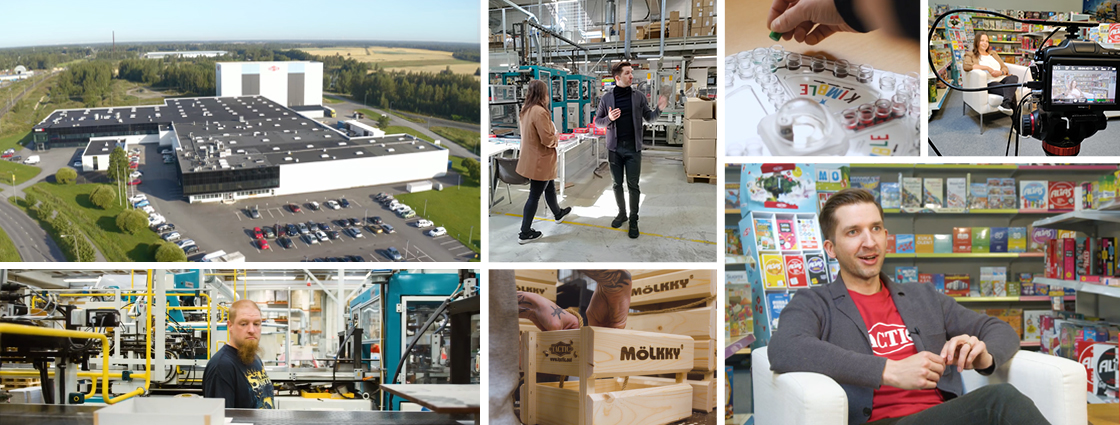
Tactic is a family business from Pori, Finland, whose innovative and captivating board games are loved around the world. For half a century, Tactic’s factory in Pori has produced products that bring people together to enjoy shared moments. Let’s dive into the heart of the game factory to hear the thoughts of Tactic employees on being Finnish, responsibility, and the importance of games.
Game business in three generations
Tactic is the life’s work of the Heljakka family from Pori, spanning three generations. The Tactic story began in the late 1960s when young Aarne Heljakka’s family received a board game as a gift from an American cousin. It instantly became a hit among the family. Aarne got the idea to manufacture and sell the game in Finland and the rest is history. Starting from a garage in Pori, Kimble has conquered the world, with the company growing to new spheres.
One of Tactic’s key figures is Marketing Manager Jemina Heljakka, who has lived and breathed games all her life. Tactic’s founder Aarne Heljakka is Jemina’s grandfather, and Jemina’s father Markku Heljakka managed the company for nearly 40 years. In the family business, everyone got involved early on in testing and selling games. Jemina recalls fondly how her first pocket money was earned by folding Kimble game boxes on the living room floor.
Tactic’s games are still made in Pori today, where the Heljakka family is actively involved in the company’s operations. Even the retired Markku Heljakka occasionally creates social media content and videos. Jemina believes that working in a family business is very versatile, with broad responsibilities and good influence. It has been great growing with Tactic’s products and gaining the assurance from experience about what works and what kind of games consumers want to play, whether in Finland or abroad.
Roots firmly in Finland
Lauri Nieminen has had the most interesting two years of his career as Tactic’s CEO. A professional in video marketing, Lauri had previously taken Tactic to new markets like the United States. His first game memory is Tactic’s Choco, which made an impression on young Lauri. Lauri has also been a cover boy for Tactic – his picture graces the cover of the first Junior Alias.
Being the CEO of a family business is a great source of pride for Lauri Nieminen. Over the years, he has watched the company grow and diversify, and now he gets to lead this prestigious company. For Lauri, Tactic’s vision remains crystal clear: bringing people together through games and creating unforgettable moments and cherished memories in everyday life.
Being from Finland and having production in Pori are at the core of Tactic’s value proposition. Since the company was founded, work has been done with local resources. Today, Tactic is a significant employer in the region. Responsibility is a matter of the heart for Tactic employees; every worker can truly stand behind the kind of products that leave Pori for the world.
Sustainable development bears fruit
Jemina Heljakka believes that in a family business, it is natural to think about sustainable business practices and ensure its continuation for future generations. Domestic production means that the entire design, procurement, and production chain’s responsibility can be guaranteed. They can choose the right raw materials for products and monitor where the materials come from and how the products are made. They know precisely who makes the products and that working conditions are good at every stage of the production chain. Tactic products usually bear the Key Flag symbol, indicating that the products are made in Finland.
Investment in responsibility is evident in Tactic’s brand. Tactic games are seen as reliable domestic products that are fun to play year after year, game after game. Sociality is also at the core of Tactic’s brand, and people gather around games to enjoy being together. People can safely choose a familiar game manufacturer who considers the environment in the manufacturing process and has the experience to always make the right products for the right need.
Everyone plays their part
Every Tactic employee has their important role in the company’s responsibility chain. Nico Lehtonen, from Pori, is responsible for production consistency. His job includes equipment and property maintenance and renewal. Nico praises Tactic’s excellent team spirit, where everyone works towards a common goal. This also helps in quality maintenance when solutions to process problems are sought together. In Nico’s role, responsibility is also seen in reducing energy costs, keeping the devices efficient, and utilizing all the heat produced by the machines.
Roni Kotkavaara works in Tactic’s warehouse. He started at Tactic as a forklift driver and is now a trainee supervisor. Roni’s job is to send goods from the factory at speed, thus bringing joy to children all over the world. Roni feels good knowing that someone is playing the very game he packed and sent out. According to Roni, Tactic is an excellent employer where they also have fun, as should be in a game factory. According to Roni, responsibility is evident in the warehouse, especially in load optimization. When products are packed tightly, the delivery is sure to arrive intact at the destination.
Game designer Petter Ilander is responsible for the game mechanics at Tactic. Responsibility in game design can be seen, for example, in considering how many times a game can be played before it starts to repeat itself. The bar is high at Tactic, and they always aim to maximize the number of plays. Material choices are also durable; they avoid plastic and consider which cardboard solution would last best from one game to the next.
The future looks bright
Every Tactic employee shares the core values of the family business and implements responsibility in their work. CEO Lauri Nieminen is especially happy about this. The company’s playing field is interesting, and Lauri sees no limits to what Tactic can offer consumers in its main product categories. The world is constantly changing, so there is always work to be done and development to be made.
Jemina Heljakka also sees a bright future for Tactic. Domesticity is an important resource: on the domestic market, new things can be tested, which then spread to other markets. In this way, the company grows and expands its operations responsibly. It is important to continue making sustainable choices that keep the company and employees in good shape and consumers satisfied. This ensures that Tactic remains a pioneer in bringing people together to spend quality time together in the future, too.
Further information: www.tactic.net/…/responsibility

Mother Earth is an entertaining new trivia game centered around the health of our environment.
- Mother Earth is a current trivia game full of engaging questions about preserving our precious planet.
- The game’s questions and research are done in cooperation with students from the University of Lapland.
- The game will be made in Tactic’s Pori factory sustainably and plastic-free.
- The gameplay is all about cooperation, just like preserving our planet.
- Playing Mother Earth is good for the environment – knowledge affects actions.
The theme of the game
Do you know what sustainable consumption is, and how to reduce the burden on the Earth? And would you like to learn how to help endangered animals and prevent biodiversity loss? The resources of Mother Earth are abundant but limited. The time has come for us to show gratitude and take good care of our environment.
The aim of this educational trivia game is to increase awareness and to provide practical tips about sustainable choices and living in harmony with nature and the animal kingdom. The game approaches this challenging and complicated topic through positivity by encouraging and inspiring players. This trivia game also helps us understand the factors connected to decision-making concerning environmental issues – the things we as individuals can only have a limited impact on.
The game is recommended for ages 8 and up. It is equally suitable for those environmentally aware and for those only starting to learn more about the topic.
The four question categories are:
- Environmental agreements and laws
- Recycling and sustainable consumption
- Endangered species and biodiversity loss
- Environmental learning and skills
Cooperation with the University of Lapland
Mother Earth trivia game’s questions are created in collaboration with students from the University of Lapland’s Faculty of Education attending a course on gamified and playful learning during spring 2023.
The course emphasizes sustainable education, and its aim is to both introduce the world of game design to the students and to provide them with the tools to build positive views of the future for children and youth. The course focuses on the themes of gamification, playfulness, and the future of Planet Earth.
We at Tactic want to give the students real working life experience and expand their knowledge of traditional board game design and its potential societal influence. We can show them how big of an impact their work can really have. We also genuinely believe that the participation of students, their fresh views, and their creative ideas and backgrounds in pedagogy will result in current and engaging content as well as increased credibility and successful moments of collaboration. In addition, children and youth of comprehensive school age will also participate in the project, and their thoughts on the future will be utilized in the design of the game content.
The course is designed and organized by university lecturers Marjaana Kangas (docent of gamified and playful learning) and Ulla Kemi (lecturer in sustainability and outdoor education).
Game research expert Katriina Heljakka from Tactic will deliver the students a lecture on play and playfulness.
A sustainable choice – made in Finland
The Mother Earth game is made sustainably and plastic-free in the Tactic factory in Pori, Finland.
Tactic’s games are made in Pori following environmentally friendly principles. We are proud of our Nordic quality criteria, our professional competence, and our responsible attitude towards environmental issues.
Thanks to our domestic production, we know our entire chain of production, and we can guarantee the traceability of the raw materials we use. In our production, we frequently use, for example, European recycled cardboard and recyclable plastic. As early as the design stage, we are already putting in the effort to minimize material waste and to minimize the use of unnecessary plastic wrap in, for example, product packaging and card decks. The Mother Earth trivia game is a 100 percent plastic-free product.
All products made in the Finland factory of Tactic Games Oy only use FSC® -certified paper, cardboard, and paperboard. You can find the FSC logo on our products, including board games, puzzles, books, and playing cards. Tactic Games Oy’s FSC license number is C171450.
We are also committed to developing the monitoring and optimization of our carbon footprint.
The Mother Earth trivia game was recognized as a green product at the world’s biggest toy fair, Spielwarenmesse in Germany in February 2023.
Read more about our responsibility: tactic.net/en/tactic/responsibility/
Gameplay
Mother Earth is not only an educational trivia game, it is all about cooperation – just like saving our precious planet!
As the game starts, Mother Earth gives each player tasks they aim to complete during the game by giving the right answer to multiple choice questions – together, of course. Correct answers propel players closer to their shared goal, while wrong answers make completing the tasks harder than before. Special damage cards make playing the game a more strategic experience.
In Mother Earth, the players win together once they have completed all of their tasks. The players also lose together if they take too much damage or if it becomes impossible for them to complete their tasks.
The game features a beautiful rotating game board and 300 cards featuring imagery related to environmental topics.
Watch this video and learn the game idea!
Conclusion
Playing the Mother Earth game is good for the environment. Increasing environmental awareness is a powerful way of changing our attitudes and choices towards more sustainable ways.
The Earth has given us a good life for such a long time, and now it is our turn to show our gratitude and take good care of Mother Earth. So, let’s start solving environmental challenges and walking towards a more sustainable future.
We at Tactic are committed to building a more sustainable future.
Let’s take the first step by playing a round of Mother Earth together!
The game is launching in fall 2023. It will be translated into several different languages, and the game will be sold around the world by Tactic’s retailers.

With many games, it’s easy to encourage even a younger child to use mathematical thinking. Play with building blocks that have different shapes; search for Lego pieces of a certain colour; build tall and short block towers; count your child’s fingers and toes; or move forward according to the number on a die.
If your child is naturally curious, you can gently introduce them to the wonderful world of maths, as it develops their thinking skills and help them understand the world around them.
The things the child has learned before form the basis for learning new things. In order to maintain an interest in mathematics, it is important that the child has a solid foundation and moves forward step by step. Small experiences of success encourage them to learn more!
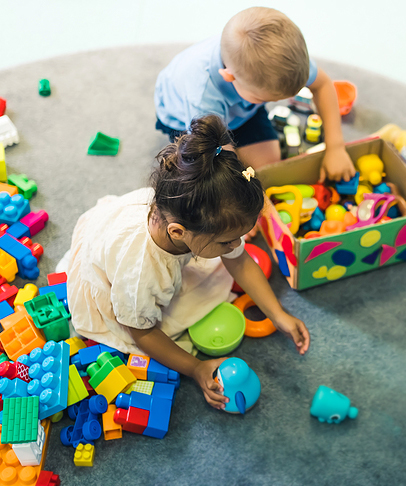
At first, a child learns to connect a certain amount of things to a certain word, like “one”, “two”, “three”, etc. Once they use those words to count, they are soon able to connect the amount to the right number, too.
- Games, where the players move forward according to the pips on a die, support these skills.
- Try counting the number of steps in a staircase, the number of cars in car park or the petals on a flower.
It’s also easy to do a little bit of addition or subtraction during play.
- I have 1 Lego piece, and I get 2 more, so I have 3 Lego pieces. Or, I have 3 peas, I eat 1 of them, so I have 2 peas.
In addition to numbers and amounts, mathematical thinking also means comparing, organising and recognising shapes as well as the concepts of location.
- In everyday situations, you can compare amounts. “Which bowl has more strawberries? Do they now have the same number of strawberries?”
- Tidying up your child’s room in the evening can turn into a game when you combine with a little bit of organising. “Let’s first collect all the soft things, and let’s put all the red things over here.”
- A child’s vocabulary and thinking develop when the grown-ups use the correct terms. Instead of saying “Could you bring me that block over there?”, you could say, “Could you pass me the round block that’s behind the box?”
In childhood, you build the foundation for mathematical thinking, which promotes a positive attitude to mathematics even when the child grows older.
We recommend
You can find all Let’s Learn products here.
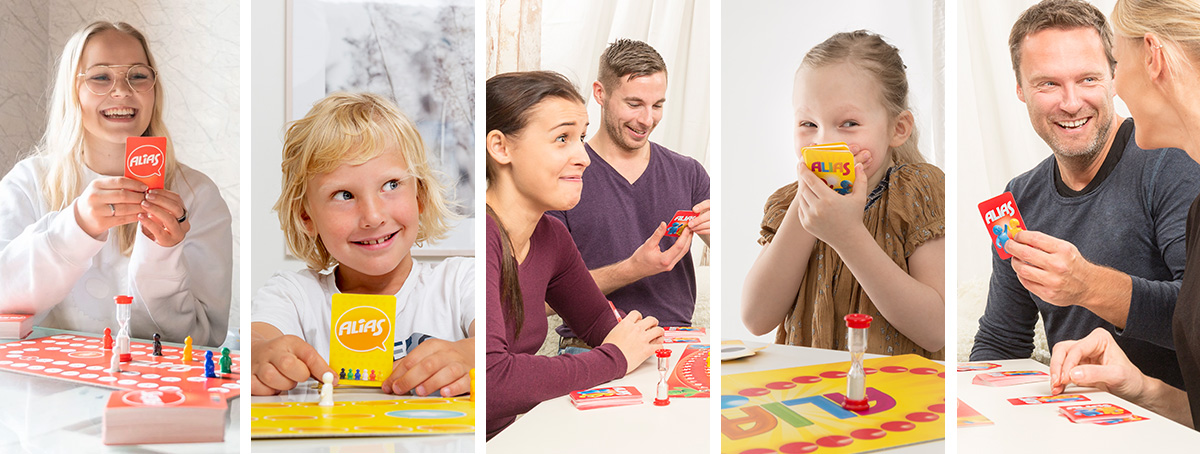
For more than 30 years, Alias has been part of family life from the parents’ first date to having their own children playing. Nothing brings generations together quite like Alias.
Finland is best known for its legendary mobile phone brand Nokia, whose slogan was Connecting people. The same can be said about another Finnish legend, Alias. Alias is the original word explanation game designed and manufactured by Tactic Games in Pori, Finland. Alias plays a vital part in keeping families together, not just in Finland, but all around the world.
The generation game
Alias is a game that travels from generation to generation. It’s hard to imagine a game that promotes family values better than Alias. Adults play it with their friends as well as with their children, children and teenagers play it together, grandparents play it with their grandchildren – it’s truly for everyone.
When young adults start dating, Alias acts like a relationship barometer; you know that you have found a true connection when your partner guesses the right answers from the tiniest hints. The more a couple spends time together, the better they become at Alias, with inside clues that win the game. Also, if a couple reacts badly to losing Alias, there may be hard times ahead.
When the couple settles down and has children, board games become a great way to fuel children’s natural curiosity and expand their vocabulary. When children grow, they progress from concrete things to abstract concepts. Again Alias is there to boost both language and cognitive skills, not to forget the important social skills.
Beating the pandemic
Even before the pandemic hit, board games were experiencing a renaissance. During lockdowns, they became a lifeline that kept both children and adults together and engaged. Being deprived for so long of socializing, communicating and playing together has brought a deeper understanding of how important games like Alias are for our resilience.
The seemingly trivial word explanation game holds important values for us all: coming together for social interaction, understanding others and being understood, and uniting as a team. All this is wrapped up in a fun and highly engaging package, served as a board game for everyone to enjoy.
Now that life is normalizing again, it is time to encouraging children and adults to socialize more. The best way to do this is to organize a joyful board game night.
Cut the screen time
Children and especially teens spend way too much time glued to their screens. Hours and hours spent on mobiles and consoles not only leads to physical problems, but also deprives children from social contacts.
Board games and Alias in particular is a great way to get children active and interacting with the real world. Siblings who continuously argue with one another can suddenly find a common ground as a winning Alias team. You could think of Alias as the super nanny for the family.
Alias gives a boost to growing cognitive and social skills while also increasing self-expression and understanding. It feeds children’s imagination and engages them to vocalize their thoughts. A game night is also a safe place to talk about negative or scary things in life.
Meet the Alias family
The Alias game concept is so ingeniously simple that anybody can play it. Therefore you need several variations of the game. There are specific gameboards for young children who can’t read yet. There are also family and UK versions and of course the Original Alias.
As there is an Alias for every player, one copy may not be enough – you need several to cater for different situations. But don’t worry, every Alias bought is a good investment for happy times spent together with friends and family.
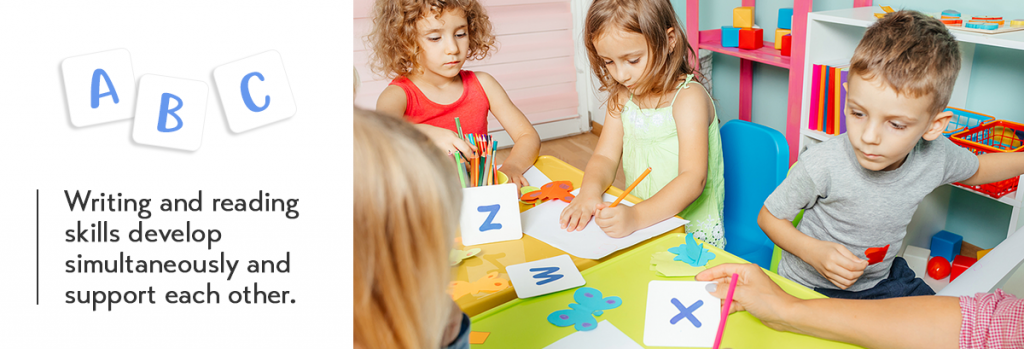
Reading together introduces the child to the world of letters. In order to learn to write, a child must already have good hand-eye coordination, the ability to concentrate, and sufficient skills at handling a pen.
The skills that precede writing can be practiced through play in the following ways:
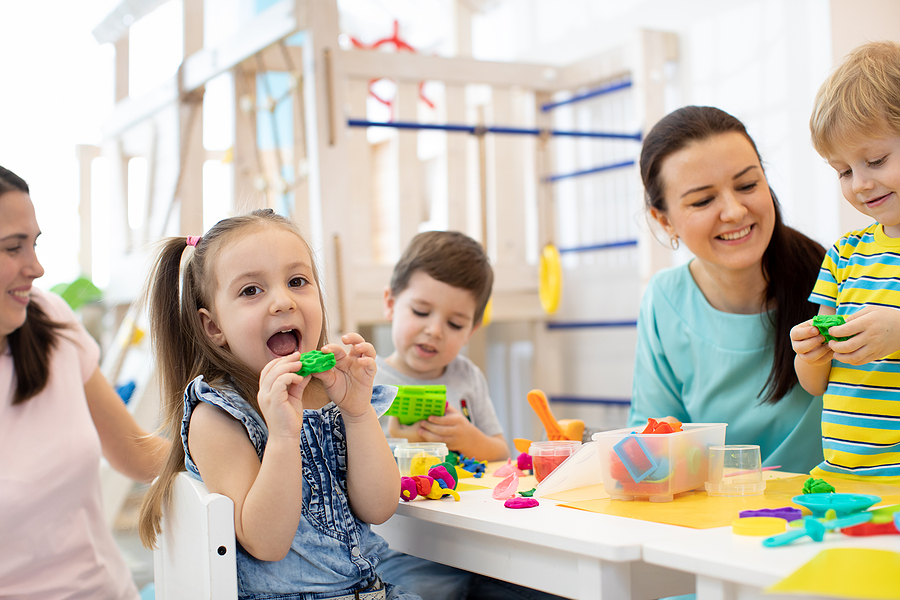
Rolling small balls out of play dough develops and grows the strength and accuracy of your fingers.
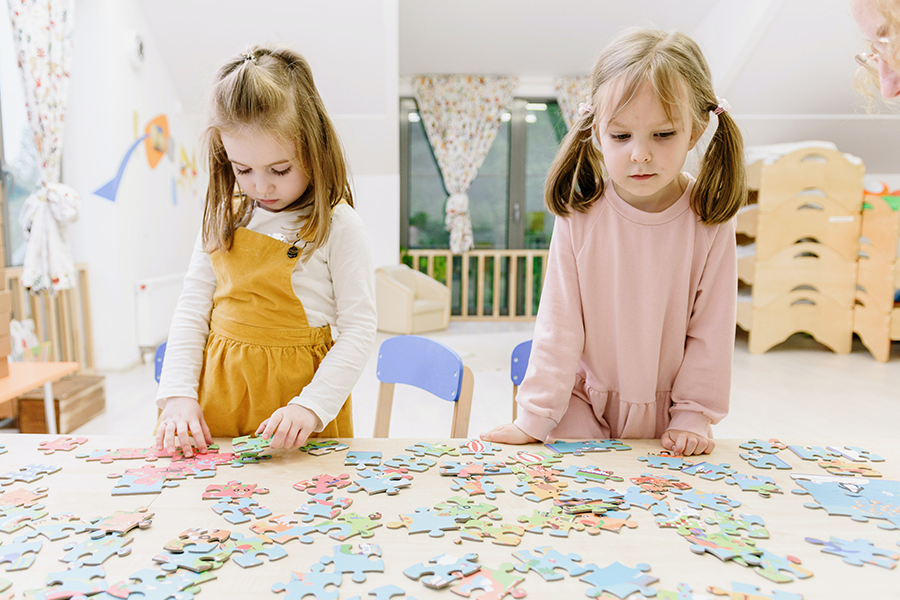
Making puzzles improves concentration, observational skills and dexterity.
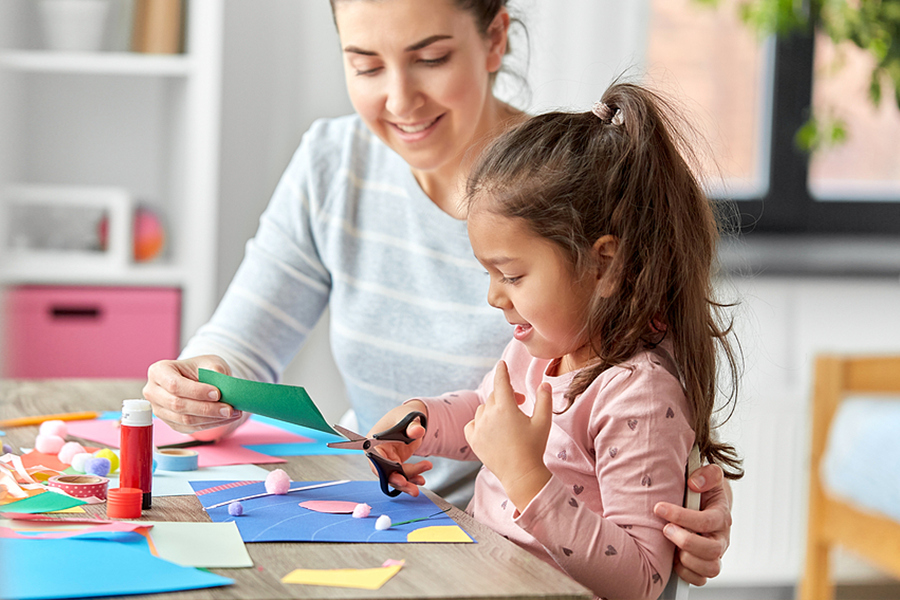
Colouring in pictures, following lines and shapes, and cutting with scissors allows a child to develop accuracy, observational skills and concentration.
When a child has developed these basic skills and shows an interest in letters and learning to write, you can support them through play.
Practice the shape of different letters by drawing letters with your finger or a stick on a plate that has salt or sand on it. You can suggest letters to your child by saying them out loud. Then you can think of words that start with that letter. This helps the child learns the shape as well as the sound of the letter.
It is also fun to form letter shapes with your own body, while lying on the floor or standing up.
In a good pen grip, the pen should be between three fingers, and the wrist should be relaxed. Your child will also gradually learn this.
It is common that early on a child writes letters backwards and that some letters are still missing. This usually corrects itself as the child’s skills grow.
As the child learns to write words, ask them to help by writing the shopping list, for example!
Writing and reading skills develop simultaneously and support each other.
Photos: bigstockphoto.com
We recommend
You can find all Let’s Learn products here.
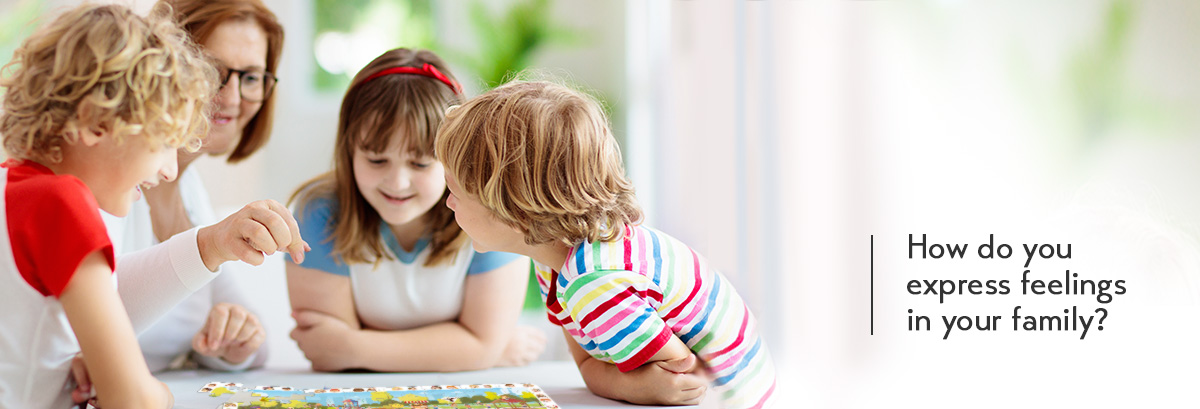
How and why is it worthwhile to grow your child's emotional skills?
A child experiences many kinds of feelings during the day but they don’t yet have the words to talk about them. That’s why feelings are seen and heard. It’s good to teach your child that feelings are allowed, that they are a part of life and that they can show, but that it is also good to control them.
Let’s name our feelings
A child learns words that describe feelings in everyday interactions. Even if your child is very young, you can put their feelings into words by saying “Are you excited?”, or, “I think you feel happy after meeting Grandad.” The child notices that a grown-up understands their internal feelings, which in turns helps them to feel calm. The child learns to describe their own emotional state.
Practice describing your feelings with the help of books and games. Recognise feelings from expressions, perform different feelings yourselves, and discuss the reasons and consequences of different feelings.
Guide your child to recognise feelings
Discuss the feelings a character in a book might have: “How did this character feel? Why does he have that kind of an expression?”
Guide the child to see which signs refer to a certain feeling, for example the expression and position of a character in a book.
Gradually, the child learns to recognise and name their own feelings and to understand that other children have feelings, too.
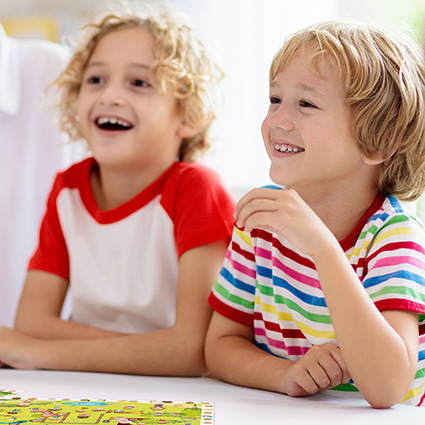
Photos: FamVeld / Shutterstock.com
Children learn by copying
Tell your child about your own moods. Explain, why you are annoyed by something, or why something made you happy today.
You should also think about what kind of an example you set your child – how do you express feelings in your family?
Talk it out after different situations
When the child does something that makes another person feel bad, tell the child how the other person feels.
Ask how the child would feel if someone did the same to them. By putting themselves in another person’s position, the child learns empathy.
Recognising and controlling one’s feelings helps the child get along with other children. It’s easier to make friends, and working in a group becomes smoother.
Let's learn Feelings puzzle
This 56-piece puzzle offers a grown-up and child an opportunity to examine different feelings together. Little by little, a child can learn to understand their own feelings and to put them into words.
- The high quality 56-piece puzzle is full of wonderful details to explore.
- Comes with a list of questions that can be used to talk about feelings.
- Helps children to understand where different feelings might come from.
Videos
Read out more about the Let’s Learn range here.

I’m always having more fun with Alias
Alias board game has millions of loyal fans around the world. We talked to one of them to find out how Alias keeps people entertained year after year.
Manna Fransas is in her thirties and lives in Helsinki, Finland. Coincidentally, she is about the same age as Alias, published in 1981. Manna works at an ad agency as a copywriter and her hobbies include basketball. Manna’s immediate family consists of her two children, her partner and his daughter.
Manna recalls that she was still in primary school when she first played Alias with friends from her neighborhood. From day one Manna was drawn to Alias because it was fun, inventive and fast paced. Even though Manna plays plenty of other board games too, Alias has always been her number one choice. Words like energetic, daring, social, happy and humorous describe Alias pretty well – and admittedly her own bubbly personality as well.
Get the party started
When Manna leaves for a cottage weekend or skiing with friends, Alias is always packed along. Just before the Covid pandemic hit, Manna celebrated her 30th birthday with a big group of friends in Barcelona. With her, she had the Late Night Alias – a perfect adult party highlight.
Alias fandom has also spread to Manna’s offspring, and she has played plenty of board games with her children. Now her children can also play Alias together. Manna sees that Alias has many educational benefits: children’s vocabulary extends through play and they also learn necessary social skills, like losing. Manna still prefers to play Alias with her own friends – they offer a much needed challenge to the veteran player.
Manna has bought her fair share of Alias games during the years; the most popular ones are on their second sets already. In addition to the Original Alias, Manna’s game cupboard holds Junior Alias, Disney’s first Alias, You Are… Alias, Party Alias, Late Night Alias, Rähinä Alias (a Finnish exclusive) and Snack Alias Lights, Camera, Action. She has an ideal Alias version for every occasion.
Mastering her game
Even though playing Alias is all about having fun, the will to win is genuine. Manna claims jokingly that she has never lost a single Alias game, but she admits that playing a lot helps. Especially with the Original Alias, the words are so familiar, that she always knows the quickest ways to explain them. That’s why Manna keeps buying new Alias versions, so she’ll have fresh words to explain.
All of Manna’s closest friends are pretty competitive, too. During Alias, emotions tend to heat up and sometimes an odd quarrel stirs up. Luckily, so far no friendships have been broken off because of Alias, and the winners are always happily rewarded with something like a bottle of bubbly.
There are also funny inside stories when friends play a lot together. For example one of Manna’s friend didn’t know the word mosaic, but instead explained the word mosque. This funny mistake still makes her friends laugh. So playing Alias can expand your vocabulary even as a grownup.
How to win Alias
In addition to verbal talent, Manna thinks that Alias also requires strategic skills. It is not the same how you explain the words, and whether you explain long words or praises in two parts or together. Here are Manna’s hot tips for winning Alias:
- Explain it simply, use as many opposites as you can: Not hot, but cold. Not long, but short. Also use plenty of synonyms.
- Explain compound words in two parts: “Milkman delivers bottles in the morning and is not a woman”.
- If you don’t know the word, don’t even try to explain it. Take a minus point and move on rather than get stuck on a difficult word.
- Know your team members, so you can benefit from common praises and history. Manna’s favorite Alias team member is her little brother.
Finnish entertainment package
As an adult, the Finnish roots of Alias have become more important to Manna. She thinks it’s great that Alias represents Finnish talent and knowhow. Manna also has a big pile of other Tactic’s games, which are all made in their own factory in Finland.
If Manna could design her own version of Alias, she would add a novel surprise element to the game. In the D.I.Y. Alias, you can already come up with your own words, but an unexpected surprise, like a team change in the middle of the game, would add suspense for even the most experienced player. But would a sure win still be guaranteed?
Manna has a firm opinion on why everyone should play Alias. It’s fun yet educating. It builds team spirit and cooperation skills. It’s easy to learn and anyone can play it. You can never get bored, because every player and play session is different. A perfect entertainment package, indeed.
Explore the selection and find your favourite Alias!

Photo: FamVeld / Shutterstock
Thinking skills - a curious child learns by trying and investigating
A child is naturally curious. Little chats and moments of wonder are interesting to both the child and parent. You can guide a child’s thinking, but you should also leave room for their own creativity – even when it comes to thinking.
How can you support your child’s developing thinking skills?
Let your child play, experiment, try again, and see the relationship between actions and reactions. While building a tower of blocks, a child tries to place the block one way. If the block falls, they try again in a different way.
Allow your child time to think and try again. Don’t solve the problem for them.
A child is eager to ask questions. Don’t always offer an answer but rather encourage them to think about the answer themselves. “What do you think it could be?” “Where do you think we could find more information about this?”
While you play, you can think together about what happens if you act in a certain way. What happens, if you do something else?
Encourage your child to find different solutions. You can also “think aloud” to give your child an idea of your own thought process.
Critical thinking is one of the most important tools in the future. It is needed to solve problems as well as to understand the relationships between different things. Critical thinking is enforced by a stimulus-rich environment and a positive atmosphere. When a child is encouraged to wonder and investigate, you also increase their motivation to learn new things.
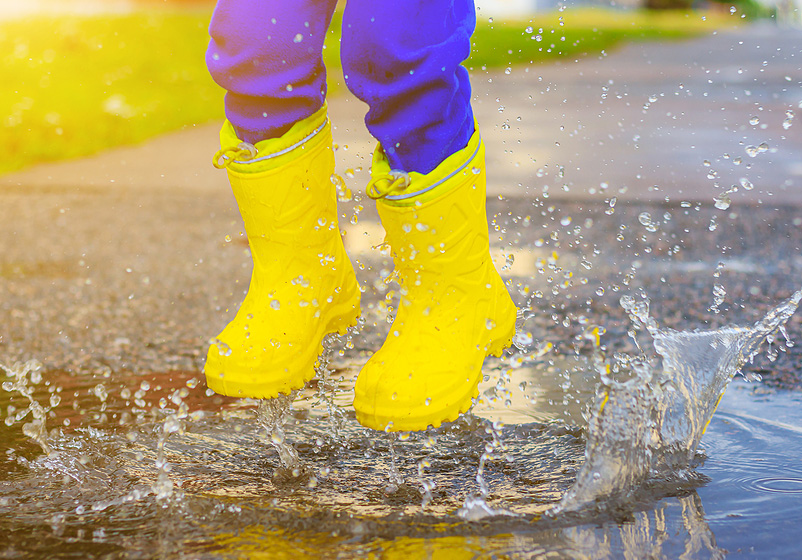
Photo: alenka2194 / BigStock.
Think and wonder about different phenomena together. “Where do puddles disappear to in the sunshine?”
“Why does oil float on top of water, when you pour a little bit of oil in a glass of water? And what happens, when you add a drop of washing-up liquid?” Come up with your own little experiments.
Talk about stories. Read the beginning of a story and think about what happens after, and why. What else could have happened?
In the modern world, there is no shortage of stimuli, but it’s important to also allow some space for boredom. That leaves time for one’s own thoughts.

